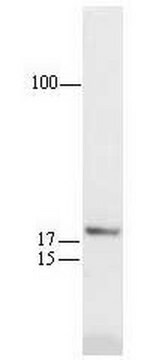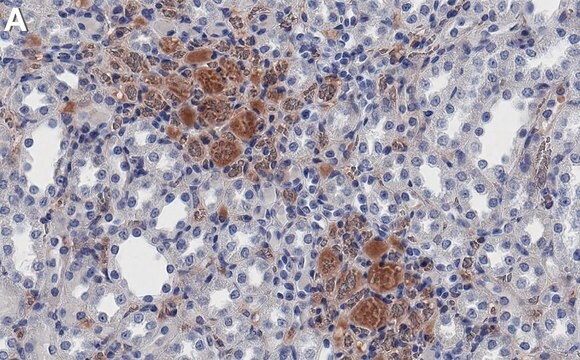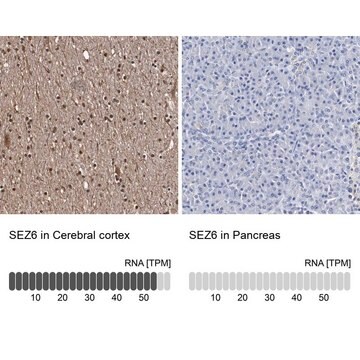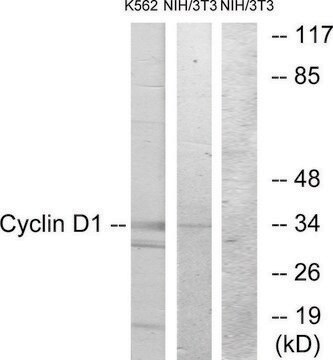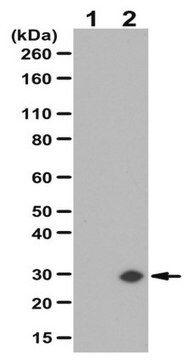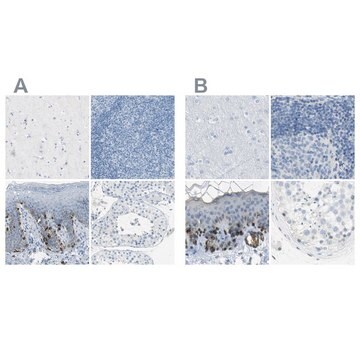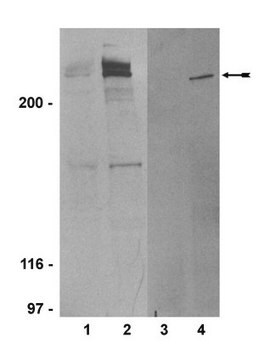MABE325
Anti-p21WAF1 Antibody, clone EA10
clone EA10, from mouse
Synonym(s):
Cyclin-dependent kinase inhibitor 1, CDK-interacting protein 1, Melanoma differentiation-associated protein 6, MDA-6, p21
About This Item
Recommended Products
biological source
mouse
Quality Level
antibody form
purified immunoglobulin
antibody product type
primary antibodies
clone
EA10, monoclonal
species reactivity
human
technique(s)
flow cytometry: suitable
western blot: suitable
isotype
IgG1κ
NCBI accession no.
UniProt accession no.
shipped in
wet ice
target post-translational modification
unmodified
Gene Information
human ... CDKN1A(1026)
General description
Immunogen
Application
Epigenetics & Nuclear Function
Cell Cycle, DNA Replication & Repair
Immunohistochemistry Analysis: A representative lot from an independent laboratory detected p21WAF1 in normal human lower back tissue (el-Deiry, W. S., et al. (1995). Cancer Res. 55(13):2910-2919.).
Flow Cytometry Analysis: A representative lot from an independent laboratory detected p21WAF1 in non-irradiated and gamma irradiated CLL cells (Carter, A., et al. (2004). Br J Haematol. 127(4):425-428).
Quality
Western Blot Analysis: 1 µg/mL of this antibody detected p21WAF1 in 10 µg of HT-29 cell lysate.
Target description
Physical form
Storage and Stability
Analysis Note
HT-29 cell lysate
Other Notes
Disclaimer
Not finding the right product?
Try our Product Selector Tool.
recommended
Storage Class Code
12 - Non Combustible Liquids
WGK
WGK 1
Flash Point(F)
Not applicable
Flash Point(C)
Not applicable
Regulatory Listings
Regulatory Listings are mainly provided for chemical products. Only limited information can be provided here for non-chemical products. No entry means none of the components are listed. It is the user’s obligation to ensure the safe and legal use of the product.
JAN Code
MABE325:
Certificates of Analysis (COA)
Search for Certificates of Analysis (COA) by entering the products Lot/Batch Number. Lot and Batch Numbers can be found on a product’s label following the words ‘Lot’ or ‘Batch’.
Already Own This Product?
Find documentation for the products that you have recently purchased in the Document Library.
Our team of scientists has experience in all areas of research including Life Science, Material Science, Chemical Synthesis, Chromatography, Analytical and many others.
Contact Technical Service